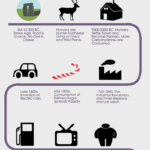Few things are more important to living a healthy life than the foods we eat. Nutrition is essential both for keeping our bodies working in top shape and for maintaining sharp mental acuity.
Understanding the depth behind effective nutrition is also a great way to change our worldview and foster a better mindset.

Take the example of free-range chickens compared to factory farm chickens. We might seek the former because the chickens consume a more natural diet with greater access to natural foods and less need for antibiotics but also find we’re supporting a less cruel environment for animals.
Below, we’ll take a look at some ways you can make nutrition a valuable asset in developing a healthy mindset.
Understanding Your Unique Needs
One thing to understand is we all need to eat; it’s one of the few things that link us together. But our nutritional needs are different; some of us have allergies to select foods, difficulty digesting others or genetic anomalies that prevent absorption of select types of vitamins and minerals.
As such, your nutritional needs can’t be reduced to a food pyramid with some pretty pictures. If you’re someone who gets a lot of cardiovascular exercise, you’ll need more carbohydrates than the average person. Runners and cyclists needn’t feel like gluttons when they scoop up a big plate of pasta because their bodies need it.
The same is true for someone doing lots of anaerobic exercise; that mostly means picking big things up and putting them back down. Someone in that category will need greater amounts of protein to rebuild torn muscles. It’s no coincidence that most power lifters are avid meat eaters.
As you put together your nutritional profile, consider your daily activities and exercises. Choosing high-quality food is still always the end goal, but matching the food to the activity is just as important. Don’t forget you can also tailor your activities to allow for more of the food types you like to allow for weight management!
The take-home is not to compare yourself unfairly to others. You may be the type who gains weight from eating a slice of bread, or you may be the type who can’t seem to gain weight even on a diet of pizza and ice cream. It’s okay to be either or somewhere in between.
Practicing Mindful Shopping

When you start to understand your nutritional needs better, you’ll also need to start being mindful in your shopping habits. There are some stacking benefits:
- Save money knowing where and when to buy
- Mindful shopping becomes mindful living
- Help others get and stay healthy with you
Saving money while also buying nutritious foods typically means understanding the seasonal foods where you live. Not all foods are available locally year-round, but when they are, they tend to be cheaper and fresher.
Supporting local food producers helps foster a better community and is ultimately better for the environment due to the lower carbon footprint. It also saves you some significant cash; sometimes you’ll be able to find produce for under $1 per pound despite regularly costing $2 to $4 per pound at the supermarket.
An easy way to find local farmer’s markets is by utilizing technology. Several apps, including Locavore and Farmstand, help you make your way to where fresh goods are sold. If you find yourself having difficulty pulling up local results, it may be due to restrictions on your internet.
However, once armed with this information, you can help others as well. You’ll find that unless you’ve already surrounded yourself with very health-conscious friends, most of the people you know don’t know all the local spots to pick up fresh food for cheap. You can save them money and promote your community at the same time all while pushing a healthier diet.
Reading the Labels
If there’s one thing to learn about nutrition, it’s how to read a food label properly. While your goal should ultimately be to buy more foods without labels (as fresh, natural foods rarely come with any nutritional facts), it would be presumptuous to assume you’ll never buy anything in a package again.
One of the things to note about food labels is that the order is based on volume; the first ingredient makes up the largest percentage of the food in the package while the last ingredient makes up the least. Take special note of that on things such as jams and preserves; the ones where sugar is the first ingredient are distant relatives of those with no sugar added, and their nutritional content reflects that fact.
As you learn to scan for “dirty words,” such as monosodium glutamate (MSG), artificial, nitrite, nitrate, food colorings with a number, partially hydrogenated, high fructose corn syrup (or glucose-fructose syrup) and aspartame (also acesulfame potassium), you’ll quickly realize just how many foods at the grocer are actually very unhealthy.
Knowing the labels will protect you against other types of cheap tricks designed to sell you junk food. Labels with no legal meanings, from “green” to “natural,” will just trigger a response to inquire deeper. In short order, you’ll be an investigator on the hunt for healthier foods.
Soon you might also find yourself asking more questions than before in other areas of life as well!


